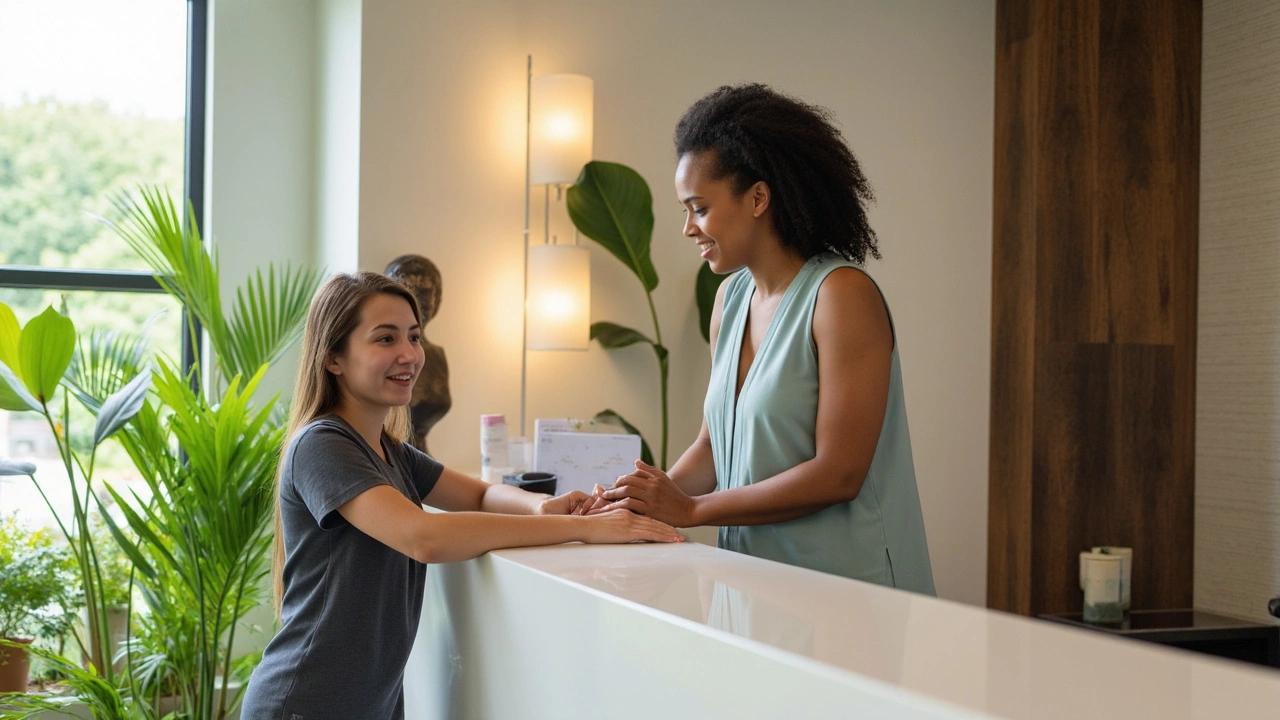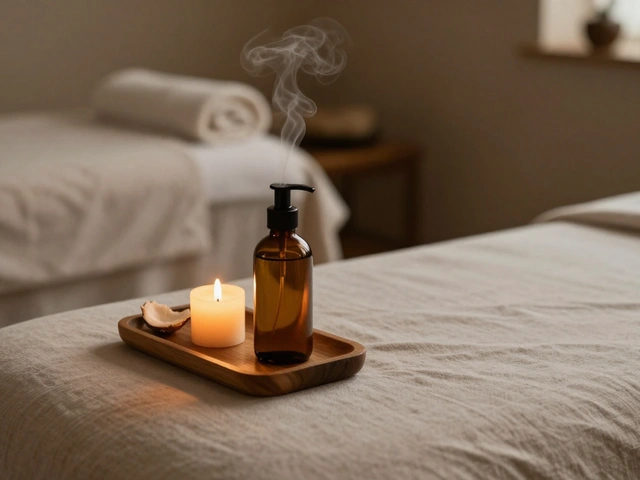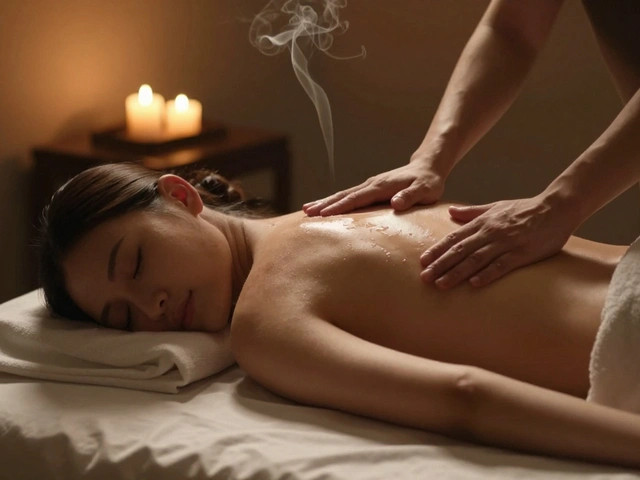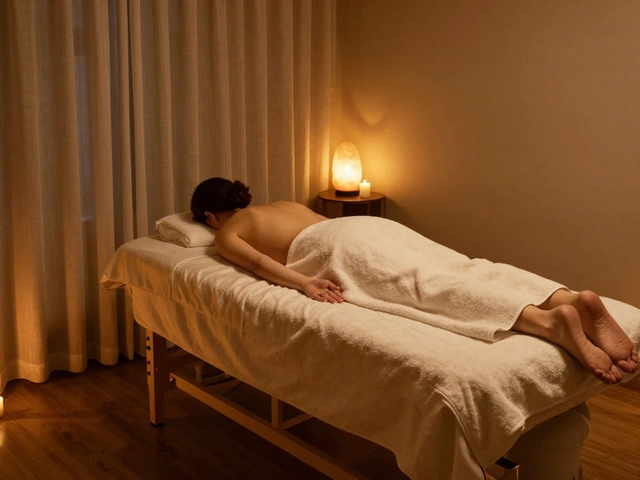The Evolution of the Professional Masseuse: Tracing History to Modern Massage Therapy

The Evolution of the Professional Masseuse: Your Comprehensive Guide
If you ask someone about a relaxing moment in their life, don’t be shocked if they smile and say, “That massage I got on holiday.” But rewind the tape—did you know the professional masseuse isn’t just a recent trend? For thousands of years, hands-on bodywork has played a central role in healing, culture, and even luxury. Yet, the masseuses of ancient temples would hardly recognize the treatments you can book online today.
This article pulls back the curtain on the role of the professional masseuse, blending history, wellness tips, practical advice, and a dash of myth-busting. You’ll find out where the art of touch therapy began, how it’s changed, and what a trained masseuse offers now—plus the real-life perks you can expect. Along the way, I’ll clear up what happens in a session, how to find a good practitioner, and how massage supports not just your body, but your mind and mood. Ready to discover why massage is so much more than a spa-day extra?
Understanding the Basics of the Professional Masseuse
Origins and History
The story of massage is older than most medical textbooks. Archaeological records reveal healing bodywork in Egypt, China, and India over 4,000 years ago. In Egyptian tombs, wall paintings show people getting massages, the ancient Chinese included it in their medical texts, and Indian Ayurveda has made touch therapy a pillar of holistic health. Back then, a masseuse wasn’t someone you booked for a 60-minute ‘deep tissue’; these were serious healers working with herbs, oils, and energy lines to keep communities healthy.
Ancient Greek athletes swore by pre-game rubdowns, while Romans considered massages as much a ritual as going to the baths. By the time modern science joined the party, massage began to blend old wisdom with anatomy and physiology. The 19th century saw Swedish massage—the grandparent of most Western therapies—codified into a system, moving professional masseuses from homey corners into health offices. Today, they’re trained (with certificates and ongoing learning) to practice safely and effectively, often as part of wellness or rehabilitation teams.
Core Principles or Components
What actually makes someone a professional masseuse? First, there’s deep knowledge—an understanding of muscles, circulation, flexibility, and pressure points. Next, clear technique (like effleurage, petrissage, and tapotement if you want to get fancy)—all designed to encourage relaxation, pain relief, or energy. But it’s not just about kneading muscles. Communication, consent, and personalizing each massage are key skills.
Modern masseuses often specialize. Swedish? Deep tissue? Sports? Lymphatic drainage? Each approach suits different goals. What ties them all together is training and the ability to adjust touch, techniques, and session plans based on your needs, questions, and comfort.
How It Differs from Related Practices
Is a professional masseuse the same as a physical therapist, chiropractor, or even a reflexologist? Not quite. Here’s a quick look at what sets them apart:
| Practice | Key Feature | Primary Benefit |
|---|---|---|
| Massage Therapy (Professional Masseuse) | Hands-on technique addressing muscles and tissues | Relaxation, pain relief, flexibility |
| Physical Therapy | Rehabilitation and targeted exercise | Injury recovery, mobility improvement |
| Chiropractor | Spinal adjustments | Alignment, nerve support |
| Reflexology | Pressure on feet/hands | Whole-body energy flow |
Masseuses focus more on systemic wellness and stress relief versus clinical injury repair or spinal health. All have their place—sometimes together!
Who Can Benefit from a Professional Masseuse?
Whether you’re a stressed city worker, a busy parent, an athlete, or just someone chasing a better night’s sleep, there’s a style of massage with your name on it. Got old sports injuries? Tight shoulders from hunching over a laptop? Or maybe you’re managing anxiety or a chronic pain condition. You don’t have to be ‘broken’ to benefit—a lot of folks see their masseuse regularly to prevent problems or simply to recharge.
This isn’t just for the well-to-do or super-fit. Most clinics, spas, or community spaces offer affordable options or packages. If you have medical concerns, a licensed masseuse will often work alongside your healthcare providers, tailoring techniques for your safety or preferences.
Benefits of Professional Masseuse Massage for Body and Mind
Stress Reduction
This is the biggie—massage is like a manual reset button for your stress levels. The soothing touch of an experienced masseuse triggers your body’s relaxation response, dropping cortisol (the stress hormone), lowering blood pressure, and switching your brainwaves to more restful patterns. The American Massage Therapy Association backs this up: users often walk out less anxious, less frazzled, and many describe the week after as “floating.”
Enhanced Flexibility and Functionality
A trained professional doesn’t just go for the ‘nice spots’—they loosen deep knots, stretch tight muscles, and can help you recover from intense workouts or stiff days at the office. Old-school and modern studies agree: regular sessions help with posture, range of motion, and even speed up muscle recovery. This is why top athletes (and lots of casual gym-goers) swear by monthly or bi-weekly massages as part of their wellness plan.
Emotional Well-Being
It’s more than physical—massage boosts levels of feel-good hormones like serotonin and dopamine. Many report improvements in mood, sleep, and an overall sense of groundedness. For those living with anxiety or depression, massage is often recommended as a safe, supportive add-on.
Practical Applications
This isn’t just a treat. Massage can help with chronic conditions (like back pain, fibromyalgia, headaches), and post-injury or post-surgery recovery. Some find touch therapy improves immune function and helps manage symptoms of ailments such as arthritis. Even if you’re in tip-top shape, regular massage is linked to better sleep, sharper mental focus, and quicker recovery from daily stressors. Check out the table below for a quick rundown.
| Benefit | Description | Impact |
|---|---|---|
| Stress Relief | Lowers anxiety, reduces cortisol | Calmer mood, better sleep |
| Pain Management | Targets muscle knots, chronic pain | More mobility, less discomfort |
| Flexibility | Increases range of motion | Improved posture, injury prevention |
| Wellness | Supports immune and mental health | Fewer sick days, better resilience |
What to Expect When Engaging with a Professional Masseuse
Setting or Context
First-time jitters? Totally normal. Most professional masseuses work in welcoming settings—maybe a private spa room, wellness clinic, or even your own home if you’ve booked a mobile therapist. Expect soothing tunes, soft lighting, and a table with fresh linens. Some add aromatherapy or gentle heat for extra comfort.
Key Processes or Steps
After checking in, you’ll chat about how you’re feeling, your goals, and any injuries or concerns. The masseuse will step out while you undress (to your comfort level) and get settled under a towel. The session itself flows between different techniques: long strokes, kneading, targeted pressure. They’ll usually ask for feedback on pressure, temperature, and any areas you want them to focus on or skip.
Customization Options
No two sessions are identical. Prefer lighter touch? Tight on time? Want to try a new oil? Professional masseuses thrive on customizing each massage—just say what you’d like, and they’ll adjust the routine. Some even offer add-ons: hot stones, cupping, stretching, or focused facial massage.
Communication and Preparation
Here’s where communication shines. Don’t be shy! Let your masseuse know about allergies, injuries, or even if you’re ticklish in certain spots. Feeling anxious about undressing or draping? Say so—they’re there to respect your boundaries. Hydrate well before and after, and let yourself relax and breathe deeply during the treatment.
How to Practice or Apply Massage Techniques
Setting Up for Success
Create your own relaxing space: dim the lights, play calming music, and make sure the room is warm. Fresh towels and pillows help, and a few drops of aromatherapy oil can set the vibe. Don’t have a massage table? A sturdy sofa, mat, or even the bed works, especially for at-home or couple’s massage sessions.
Choosing the Right Tools and Resources
Looking for a pro? Always check for licensed certification in your country—like BTEC, NVQ, or ITEC in the UK. If you’re learning, trusted resources include books, online tutorials by certified instructors, or local classes. Massage oil or lotion reduces friction; consider hypoallergenic options if you have sensitive skin.
Step-by-Step Guide
- Start with a handshake chat—what does the recipient want today?
- Wash hands and prep the space. Choose the oil and set towels for modesty.
- Begin with gentle effleurage strokes (long, gliding movements, always toward the heart for the body).
- Apply gradual pressure into tight areas, using thumbs or the heel of your hand.
- Mix techniques: kneading, tapping, and gentle stretches as suits comfort and goals.
- Wrap up with light, relaxing strokes. Offer water and rest time post-session.
Tips for Beginners or Couples
- Keep communication open: check in about comfort and pressure levels often.
- Start slow, use more oil than you think you need, and avoid bony areas or areas of pain.
- Learn one or two techniques well before getting creative.
- Remember—massage should never hurt. If in doubt, stop and reassess.
- Share feedback after—to improve together next time!

FAQ: Common Questions About the Professional Masseuse
What should I expect from a professional masseuse?
You can expect a collaborative, client-centered experience. The masseuse will review your needs, listen to any worries, and personalize the session. Privacy and comfort are top priorities. Most report leaving with lighter muscles, less tension, and a clearer mind. How you feel may vary—some notice immediate effects, others feel benefits the next day.
What happens during a professional massage session?
It starts with a quick discussion of your health, goals, and preferences. You undress to your level of comfort and relax under a towel. The masseuse uses different strokes, pressure, and stretches based on the planned routine, checking in along the way. You can ask for more or less pressure, or to avoid certain spots. The session ends with wrap-up advice and tips for aftercare.
How does a professional masseuse differ from a physiotherapist?
A professional masseuse focuses on body relaxation, stress relief, and preventative care through manual techniques. A physiotherapist addresses injury, physical rehabilitation, and mobility through medical exercises, sometimes including massage as part of recovery. Masseuses don’t diagnose or treat conditions but complement other therapies.
What methods do professional masseuses use?
The main methods include long gliding strokes (effleurage), kneading (petrissage), rhythmic tapping (tapotement), deep pressure into trigger points, and gentle stretching. Each technique serves different purposes: relaxing muscles, breaking down tension, or improving circulation. The masseuse will build a routine based on your goals.
Safety and Ethical Considerations
Choosing Qualified Practitioners
Look for therapists registered with recognized bodies (like the Complementary and Natural Healthcare Council in the UK or the American Massage Therapy Association globally). They should share their training, insurance, and code of ethics—just ask if unsure.
Safety Practices
Cleanliness is non-negotiable: fresh linens, clean tools, and hand hygiene protect everybody. Professional masseuses always use proper draping to maintain modesty and avoid intimate areas. Before starting, they’ll ask for your consent and double-check any health risks or allergies.
| Practice | Purpose | Example |
|---|---|---|
| Hand washing | Prevents spreading germs | Wash before/after each client |
| Fresh towels/linens | Maintains hygiene and comfort | Change linens between clients |
| Clear communication | Respects client boundaries | Check-in about pressure/comfort |
| Consent and medical screening | Ensures safety for specific health needs | Ask about injuries/allergies first |
Setting Boundaries
Clear boundaries are non-negotiable. It’s your body and you have the right to say where, how, and how long you want to be touched. If anything feels off, say so (even mid-session). Good therapists will check in, use respectful draping, and explain every step.
Contraindications or Risks
People with specific health conditions—such as severe cardiovascular problems, open wounds, contagious skin diseases, or certain cancers—should chat with a doctor before booking a massage. Pregnant individuals or those with osteoporosis need specialized care. A discreet, honest pre-session questionnaire is standard. When in doubt, go slow or skip massage—your safety comes first.
Enhancing Your Experience with Massage Therapy
Adding Complementary Practices
Breathe deeply, try mindfulness meditation before or after, or combine with gentle movement like yoga. Hydration and aftercare (a warm bath or nap) amplify massage’s benefits. Curious? Some clinics now pair massage with sound therapy or light acupuncture.
Collaborative or Solo Engagement
If you’re into self-care, there are ways to do basic massage on yourself—think rolling a foam roller, or learning hand/foot massage for work breaks. Couples’ massages are a fantastic way to bond and de-stress together—there are plenty of beginner guides online or via workshops.
Using Tools or Props
Foam rollers, massage balls, and percussive massagers can help keep tension at bay between sessions. Aromatherapy oils not only smell great but can lift mood or soothe the senses. When trying new tools, always read instructions and start gently.
Regular Engagement for Benefits
Getting the most out of massage takes consistency—not just a once-in-a-blue-moon treat. A monthly or bi-weekly schedule helps keep stress down, protects your range of motion, and can stop little aches from growing into bigger issues.
Finding Resources or Experts for Massage Therapy
Researching Qualified Experts
Ask friends or local forums for trusted recommendations. Check for online reviews, and organization memberships. Meet your therapist before booking to see if you click—you’re trusting them with your comfort and well-being.
Online Guides and Communities
Loads of reputable sites, like the Federation of Holistic Therapists (UK) and Massage Therapy Foundation, share tips and directories. Social media groups and local classes connect you with tips and in-person workshops.
Legal and Cultural Considerations
Laws on massage therapy and professional masseuses can vary. In the UK and much of Europe, licenses and insurance are standard. Some cultures have unique traditions (like Thai massage or Tui Na in China) with their own rules and expectations—respect local customs and seek legit places, especially abroad or for specialized therapies.
Resources for Continued Learning
Keen to learn more? Books like “The Guide to Modern Massage” (by various therapists), video platforms (with certified instructors), and local workshops keep your skills fresh. Community colleges often run affordable courses, and some therapists offer one-on-one teaching for self-massage or couple’s skills.
Why the Professional Masseuse is Worth Exploring
A Path to Wellness and Recovery
The evolution of the professional masseuse blends ancient wisdom and modern body science. Whether you’re after stress relief, faster recovery, an emotional boost, or a slice of luxury, there’s a technique, therapist, or routine just for you.
Try It Mindfully
Not sure where to begin? Start with a reputable therapist or a simple foot massage. Listen to your body, speak up about what feels good, and tweak your routine over time. For complex health needs, always chat with a healthcare provider first.
Share Your Journey
This world of healing touch is way more vast—and more accessible—than most people think. Tried a new style? Have a favourite therapist or tip that works for you? Share your thoughts in the comments! Don’t forget to follow my blog for more wellness tips, and let’s make massage a comfortable, informed choice for everyone.
Some links may be affiliate links, but all recommendations are based on research and quality.






